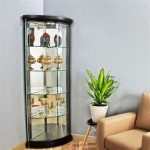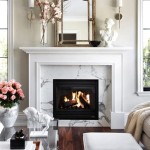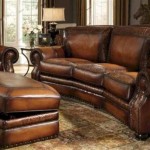Furniture Arrangement for Narrow Living Rooms: Optimizing Space and Functionality
Narrow living rooms present unique challenges when it comes to furniture arrangement. The elongated shape can make the space feel cramped and awkward if not properly addressed. Strategic planning and careful consideration of furniture placement are crucial for maximizing space, creating a comfortable atmosphere, and ensuring functionality. This article provides guidance on arranging furniture in narrow living rooms to achieve a balanced and aesthetically pleasing environment.
Prioritize Open Space and Traffic Flow
One of the primary goals in a narrow living room is to maintain a sense of spaciousness. This involves minimizing clutter and ensuring easy movement throughout the room. Overcrowding the space with too much furniture is a common mistake that can make the room feel even smaller. Therefore, it is imperative to carefully select only essential pieces and arrange them in a way that facilitates a smooth traffic flow.
Consider the main pathways through the room. Typically, there is a primary entrance and pathways leading to other areas, such as a hallway or dining room. Avoid obstructing these paths with furniture. Leave ample space, ideally at least 30 inches, for people to walk comfortably. This prevents the room from feeling constricted and allows for a more relaxed and inviting atmosphere.
Wall-mounted furniture can be an excellent solution for saving floor space. Floating shelves, wall-mounted TVs, and even wall-mounted side tables can free up valuable floor area, making the room feel less cluttered. When selecting furniture, opt for pieces with a smaller footprint. Sofas with narrow arms, chairs with open frames, and coffee tables with slim profiles are all good choices. Multi-functional furniture, such as ottomans with built-in storage or sofa beds, can also help maximize space and functionality.
The arrangement of furniture should encourage conversation and interaction. While maintaining open pathways is essential, it is also crucial to create a comfortable seating arrangement that promotes social interaction. Angling furniture towards each other can foster a more intimate and inviting atmosphere.
Utilizing the Walls Effectively
In a narrow living room, the walls become valuable real estate for maximizing space and creating visual interest. Strategic use of wall decor and storage solutions can significantly enhance the overall aesthetic and functionality of the room.
Mirrors are a powerful tool for creating the illusion of more space. A large mirror placed strategically on a wall can reflect light and visually expand the room. Position the mirror to reflect a window or a light source to maximize its effect. Avoid placing mirrors directly across from cluttered areas, as this will only amplify the clutter and detract from the overall aesthetic.
Vertical storage solutions, such as tall bookshelves or shelving units, can take advantage of the vertical space in the room, providing ample storage without occupying valuable floor space. Choose shelves with adjustable heights to accommodate items of various sizes. Consider painting the shelves the same color as the walls to create a cohesive and streamlined look. This helps the shelves blend into the background, making the room feel less cluttered.
Artwork can add personality and visual interest to the room. Choose artwork that complements the overall style and color scheme of the space. When hanging artwork, consider the scale and proportion of the artwork in relation to the wall. A single large piece of artwork can create a focal point and draw the eye upwards, making the room feel taller. Alternatively, a gallery wall consisting of smaller pieces can add visual interest and personality.
Consider creating a feature wall to add depth and visual interest to the room. This can be achieved by painting one wall a different color or applying wallpaper with a bold pattern. A feature wall can draw the eye and create a focal point, making the room feel less narrow and more balanced.
Selecting and Arranging Furniture for Optimal Functionality
The selection and arrangement of furniture are paramount in a narrow living room. The goal is to choose pieces that are appropriately scaled for the space and arrange them in a way that maximizes functionality and comfort.
The sofa is often the centerpiece of the living room, so it is crucial to choose a sofa that is the right size and style for the space. Avoid bulky or oversized sofas, as they can overwhelm the room and make it feel cramped. Opt for a sofa with clean lines and a streamlined silhouette. A sofa with narrow arms or no arms can also help save space.
Consider placing the sofa against the longest wall in the room. This can help anchor the space and create a sense of stability. However, avoid pushing the sofa all the way against the wall, as this can make the room feel even narrower. Leaving a few inches of space behind the sofa can create a sense of depth and prevent the room from feeling too boxy.
Choose chairs that are appropriately scaled for the room. Avoid large, overstuffed chairs, as they can take up too much space. Opt for chairs with open frames or slender legs to create a sense of lightness. Consider using armless chairs, as they take up less visual space and can be easily moved around the room as needed.
The coffee table is another important piece of furniture in the living room. Choose a coffee table that is the right size and shape for the space. A rectangular coffee table can work well in a narrow living room, as it can be positioned in front of the sofa without obstructing traffic flow. A glass-topped coffee table can also help make the room feel more open and airy. Alternatively, consider using an ottoman as a coffee table. An ottoman can provide a comfortable place to rest your feet and can also be easily moved around the room as needed.
Lighting plays a crucial role in creating a comfortable and inviting atmosphere. Use a combination of ambient, task, and accent lighting to brighten the room and create visual interest. Floor lamps can provide ambient lighting and can also be used to highlight specific areas of the room. Table lamps can provide task lighting for reading or working, while accent lighting can be used to highlight artwork or other decorative items. Avoid using overly large or bulky lamps, as they can take up too much space.
Rugs can help define different areas of the room and create a sense of cohesiveness. Choose a rug that is the right size and shape for the space. A rug that is too small can make the room feel disjointed, while a rug that is too large can overwhelm the room. Ideally, the rug should be large enough to anchor the furniture in the seating area. In a narrow living room, consider using a runner rug to define the pathway through the room.
By carefully considering the selection and arrangement of furniture, it is possible to create a narrow living room that is both functional and aesthetically pleasing. The key is to prioritize open space, utilize the walls effectively, and choose furniture that is appropriately scaled for the space. With a little planning and effort, even the narrowest living room can be transformed into a comfortable and inviting space.

How To Arrange Furniture In A Long Living Room

How To Decorate A Long Or Narrow Living Room Solutions For Tricky Spaces

Ways To Arrange Furniture In A Narrow Living Room Kate Wiltshire Design

How To Arrange Furniture In A Long Living Room 2025 Grace My Space

7 Tips For Arranging Furniture In A Long Narrow Living Room

Ways To Arrange Furniture In A Narrow Living Room Kate Wiltshire Design

Small Living Room Furniture Arrangement For Maximum Style

Ideas For Small Living Rooms

How To Lay Out A Narrow Living Room Emily Henderson

How To Arrange Furniture In A Rectangular Living Room








